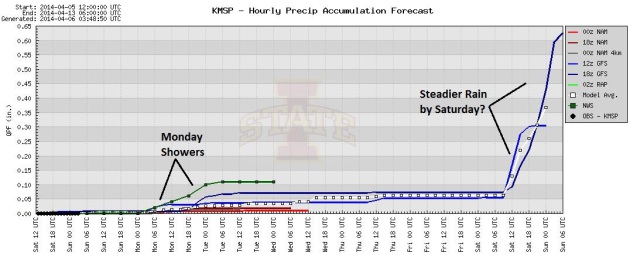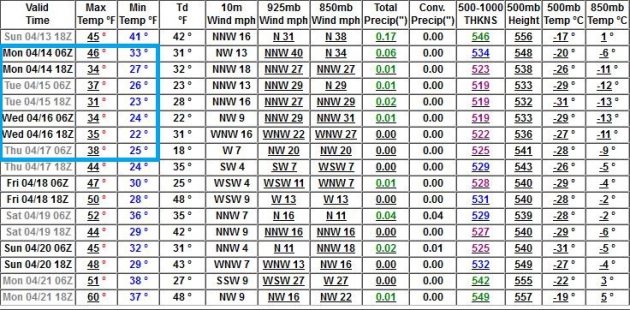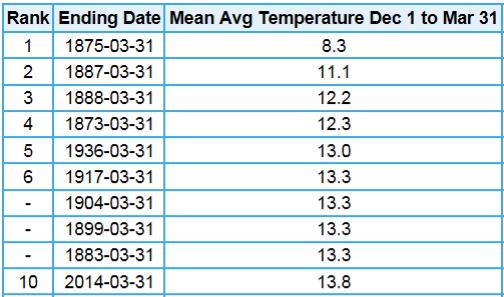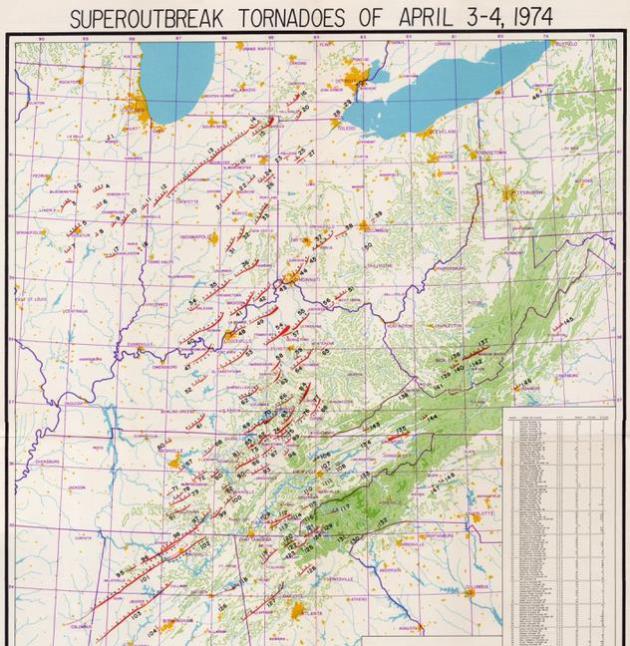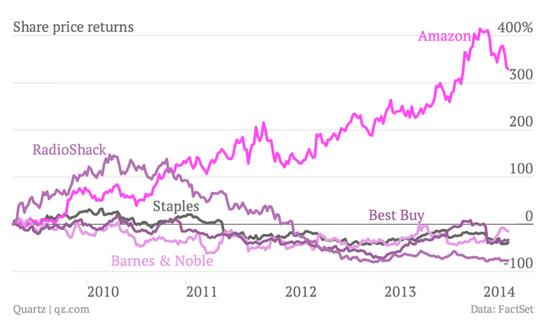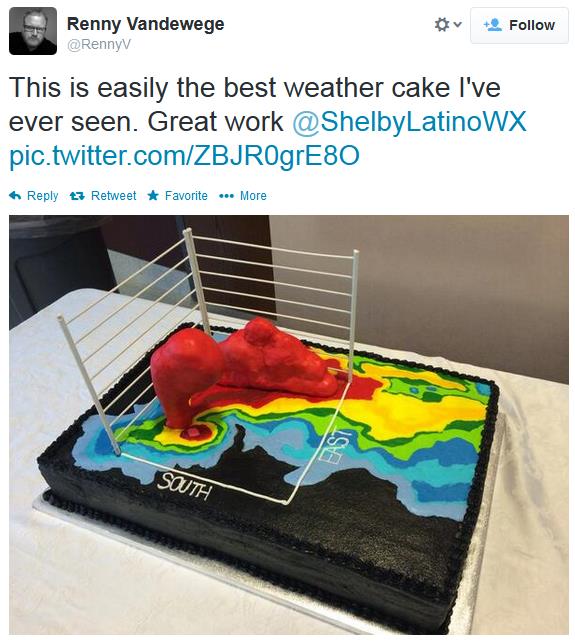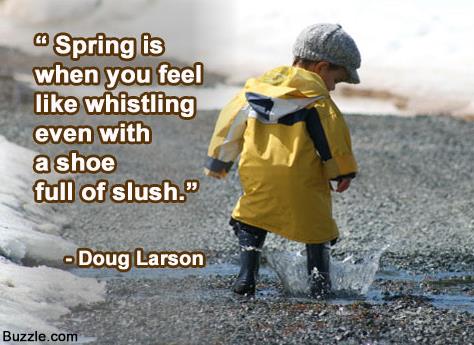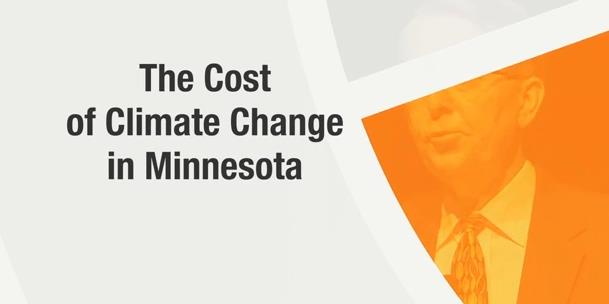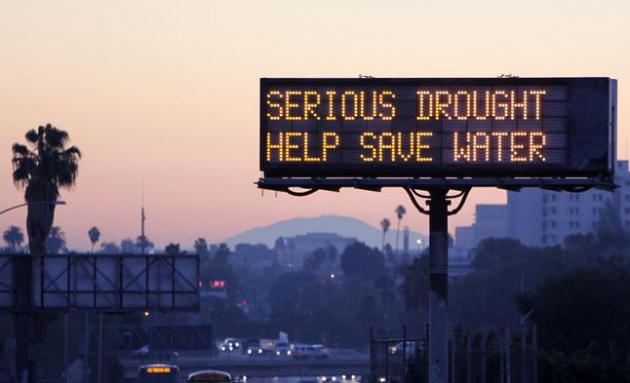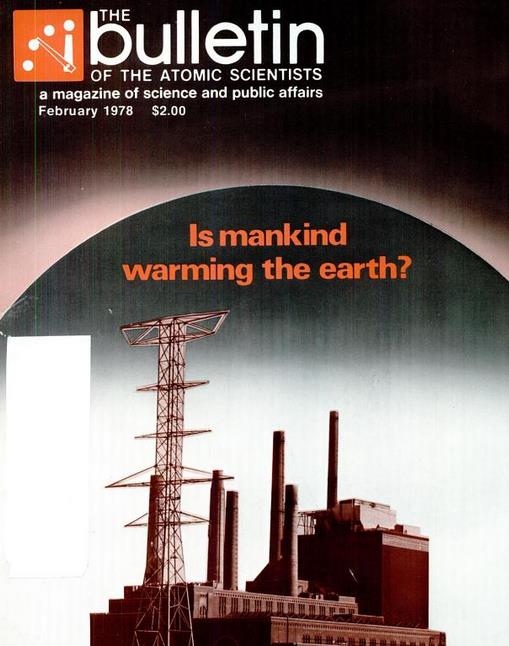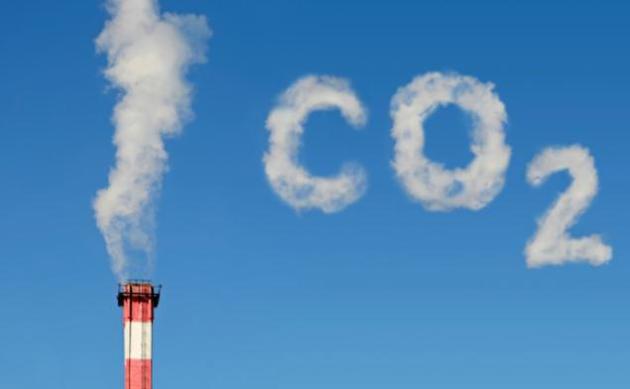Risk of Spring
Curious
new words are entering our weather lexicon, like "shower", "T-storm"
& "mild". Phrases that simply don't compute, after barely surviving a
brutal, Pioneer Winter. Like a therapist handing out free
antidepressant samples, I keep reassuring friends, family and
Minnesotans brave enough to ask that this too shall pass. And so it
shall.
The jet stream finally buckles north this week, sending a
therapeutic surge of lukewarm, Pacific air across the Plains into
Minnesota. Most of the snow in your yard will be gone by Monday, when a
few instability rain showers pop up. Instability shower? Now there's a
new concept. By Wednesday highs surge into the 60s; 70F not out of the
question, based on ECMWF guidance.
I predict precious little will
actually get done around midweek, as Minnesotans abandon their cubicles
and wander, zombie-like, toward anything resembling warmth - a Minnesota
version of "The Walking Dead".
December through March was the
coldest such period since 1936 for MSP. John Johansen points out the
following summer was one of the hottest ever observed here. July '36
brought 5 days in a row above 100F, with an all-time record of 108F on
July 14, 1936.
Not a forecast, but talk about whiplash!
* image above courtesy of
funnypicturesplus.com.
Big Swings.
A relatively mild week is shaping up; temperatures consistently above
average into at least Friday before cooling down over the weekend.
Jackets return by Sunday - ECMWF guidance hinting at a high of 40F a
week from today. But we should focus on the good news: as many as 4 days
at or above 60F; the European model hinting at 70F on Wednesday.
Graphic: Weatherspark.
A Springy Blip.
A fluke or a trend? Warm weather comes in waves (as does the chill),
and we'll all get to experience a tantalizing glimpse of spring this
week as snow rapidly melts in response to a Pacific flow and sun angle
as high in the sky as it was in early September. 500mb winds Wednesday
morning show a strong zonal flow with temperatures well above average by
midweek. Map: Climate Reanalyzer.
Precipitation Probabilities.
Look at the bright side: the atmosphere will finally be mild enough
aloft for rain showers, the National Weather Service predicting up to a
tenth of an inch of rain showers Monday; the arrival of colder air may
set off steadier, heavier, more widespread rain by Saturday. Graphic:
Iowa State.
Another Relapse?
Although not Arctic air (the sun is now too high in the sky for
anything frigid) a spell of colder than average weather is possible
within 7-9 days, based on GFS and ECMWF guidance - maybe a few days with
highs in the 30s and low 40s before recovering again after April 18 or
so.
December Thru March: Coldest Since 1936.
Unless I'm missing something here, which is entirely possible
considering how sleep-deprived I am, the 4 month period from December 1,
2013 thru March 31, 2014 was the
10th coldest on record, and the
coldest for MSP since 1936. Yep, I'd say we're all ready for spring right about now. Details from NOAA
here.
A Late Ice-Out?
Even with a rapid thaw next week with 50s and 60s odds favor a later
ice-out than usual on Minnesota lakes, maybe 1-2 weeks later. Here's an
excerpt of a post from
The Minnesota DNR: "...
Given
present ice conditions, and the forecast for continued cool weather, it
is unlikely that lake ice out dates will be earlier than historical
median dates. However, the question of how long ice out will be delayed
beyond the historical median dates is impossible to answer."
More on Monday's Rare "Blizz-nado".
Dr. Mark Seeley has a unique perspective of Monday's unusual March
tornado near St. Leo, touching down in a county under a Blizzard Warning
at the time - along with a few nuggets I was not aware of. Here's an
excerpt from this week's
Minnesota Weathertalk: "
Can
a tornado, thunder-snow, and a blizzard converge on the same geography
on the same day? Yes, apparently. Earlier this week on March 31st a
strong winter storm crossed the Dakotas and Minnesota bringing a variety
of weather. Ahead of the storm temperatures in southwestern Minnesota
soared into the upper 50s F (61 F at Marshall), then high winds, rain,
freezing rain, sleet, and snow brought blizzard warnings to many western
counties, including Yellow Medicine and Lac Qui Parle. At 4:10 pm a
Yellow Medicine County Sheriff confirmed a tornado touched down near St
Leo causing damage to some nearby farm buildings. This tornado was rare
in historical terms, just the 21st such storm reported in the month of
March during the modern era (post 1950), but it was remarkably rare and
perhaps the only case in state history where a tornado was confirmed in a
county with an active blizzard warning! The real blizzard conditions
that day ended up further north in the Red River Valley which reported
its 11th blizzard of the 2013-2014 season, accompanied by thundersnow.
The last March tornado reported in Minnesota was during the unusually
warm spring of 2012 on March 19 near Elysian (Le Sueur County)..."
Photo courtesy of
KARE-11 and Ronni V, via Facebook.
Tornado Technology Innovation Born From 1974 Tragedy.
It's hard to believe it's been 40 years since the "Super Outbreak", 150
tornadoes in 13 states, but that swarm, a record at the time, set the
stage for new technologies and innovations that have dramatically
lowered the death toll from these fickle storms.
Climate Central has more details; here's a clip: "...
Tornado prediction has also dramatically improved. To illustrate some of those advancements, the Storm Prediction Center used observations of conditions that preceded the 1974 storm and ran computer models
on Wednesday to see how well they could forecast the outbreak if it
happened today. It turns out the models were able to identify conditions
that were conducive for tornadoes to develop in a number of locations
where twisters did touch down in 1974..."
Graphic credit above: "
A hand-drawn map by Ted Fujita showing the 1974 Super Outbreak of tornadoes in the U.S." Credit: National Weather Service, Wilmington.
TV Industry Take Note: This Is What Being Disrupted By Amazon Looks Like.
Will Amazon make a dent in TV viewing, threatening giants like Netflix?
It would be wise not to discount their efforts, based on recent
history. Here's a clip from
Quartz: "
Amazon yesterday thrust itself into the increasingly crowded battle for control of your living room, with the launch of its own streaming device, FireTV. The
online retailer has an uphill battle ahead in streaming video—a sector
dominated by Netflix and, to a lesser extent, Hulu, with Apple also trying to crack the code. But those
populating the television ecosystem would do well to remember just how
disruptive a force Amazon has been in America’s economy in recent years..."

Google's Sneaky New Privacy Change Affects 85% of iPhone Users - But Most Of Them Won't Have Noticed.
Yes, if the product or service is "free", YOU are the product. Privacy?
Sounds good on paper, but it's becoming increasingly impossible to pull
off. Here's an excerpt from
Quartz: "...
What
Google really wants is for everybody to be signed in to their Google
accounts all the time,” a Google insider told me in passing last month. Around the same time, the official Gmail blog put up a 205-word post explaining the latest update to the Gmail app for Apple devices that run on iOS 7. The
app now fully supports background app refresh, which means your Gmail
messages will be pre-fetched and synced so they’re right there when you
open the app—no more annoying pauses while you wait for your inbox to
refresh..."
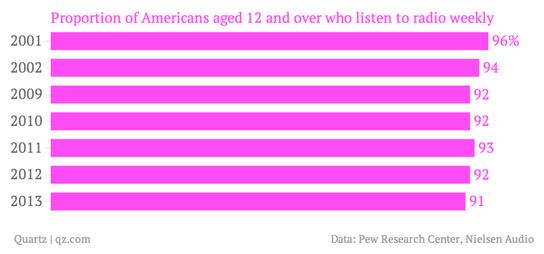
The Remarkable Resilience Of Old-Fashioned Radio In The U.S.
Most of us are still stuck in our cars, listening to terrestrial radio.
Satellite radio hasn't made much of a dent, overall. Will that change
with Internet-connected vehicles coming on line, when you can suddenly
call up Spotify or Pandora and listen to your own custom play-list?
Quartz takes a look; here's an excerpt: "...
Yet
while old-fashioned radio has proved remarkably resilient up until now,
it could be approaching an inflection point thanks to the advent of the
internet-connected car. GMSA, an industry group representing mobile
operators, last year said it expects 50% of all new vehicles (pdf) sold by 2015 to be internet-enabled, and 100% by 2025. Internet
radio services give listeners a near-infinite amount of options, and
advertisers the ability to target specific audiences, but they also face
disadvantages..."
* image above: springbuzzle.com
Climate Stories...
The Cost Of Climate Change in Minnesota. I
had an opportunity to work with TPT, the University of Minnesota and
the Minnesota Science Museum on a special project with Minnesota climate
expert Dr. Mark Seeley and Bob Johnson, from the Insurance Federation
of Minnesota. Many of us have seen spikes in our insurance premiums in
recent years, and there's a reason for that: more weather extremes,
specifically hail. The program airs this evening on
TPT Minnesota;
here's a trailer and overview: "
Experts
present new data on climate change and the economic impact of rising
insurance costs to Minnesota homeowners, farmers, and businesses. This
program was produced with the University of Minnesota Water Resources
Center and the Science Museum of Minnesota."
* more details on where you can find the program
here, courtesy of TPT.
Our Year Of Extremes: Did Climate Change Just Hit Home? NBC's Ann Curry has a timely report (airing 6 PM on Channel 11 here in Minnesota). Here's an
overview of what the hourlong program will cover: "
In
a special one-hour documentary airing this Sunday night, NBC's Ann
Curry reports there is virtually no debate among climate scientists: 97
percent now believe climate change is real and the warming is largely
caused by human activity. A year in the making, and less than a week
after stunning predictions about the future from the influential
Intergovernmental Panel on Climate Change, “Our Year of Extremes - Did
Climate Change Just Hit Home?," takes viewers on a journey to the Arctic
at the top of the world, to drought stricken regions in the American
West, to the edge of rising seas in Florida, and into extreme weather
events all over the globe..."
Can Generation Hot Avoid Its Fate? Here's an excerpt from a poignant story from
Daily Beast writer and journalist Mark Hertsgaard: "...
As
a journalist who has reported on climate change from dozens of
countries since then, I can’t say I was surprised by the IPCC’s report.
Most of its findings were familiar to anyone following the subject; I
mentioned many of them in my 2011 book, HOT: Living Through the Next
Fifty Years On Earth. But the report did provoke other emotions, because
I read it not only as a journalist, but also as a father. And as a
father, I felt grief, fear, rage, frustration and, finally, a
determination to resist. One emotion I never permit myself, however, is
despair. For despair only paralyzes at a time when action is urgently
needed..."

Climate Meeting To Discuss Future Of Fossil Fuels.
Will it be business as usual for the fossil fuel industry, in spite of
the changes we're witnessing worldwide? After all, they're only giving
us what we want and need, right? A tough problem to crack, but I'm still
convinced the marketplace (not government) can make renewables more
cost-effective, scaling up with home-grown energy sources from the sun
and the wind. It's already happening, the question is how fast prices
fall and whether our aging grid needs to be replaced by smaller "smart
grids" able to localize energy production and consumption. Here's an
excerpt from AP and
ABC News: "...
A
leaked draft of the report sent to governments in December suggests
that in order to keep global temperature increases below 2 degrees
Celsius (3.6 F) by the end of the century — the stated goal of
international climate talks — emissions need to fall by 40-70 percent by
2050. Investments in fossil fuels such as oil and coal would have to
drop by $30 billion a year, while spending on renewables would have to
go up by $147 billion annually, according to the draft. That message is
likely to face opposition from the fossil fuel industry and countries
that depend on it..."

Climate Change Is A Game Of Risk.
You'll be hearing more about a more volatile climate in the context of
risk management in the years ahead. Here's an excerpt of a very good
explanation from
Time Magazine: "...
Risk—you’ll
be hearing that word a lot in the context of climate change. That’s
because the best way of thinking about the impact of global warming—and
especially the economic impact—is as a risk factor. As the climate
warms, sea level will rise, which puts coastal communities—from tens of
millions of poor people in Bangladesh to ultra-wealthy Manhattanites—at
greater risk of flooding. Warming may also intensify tropical weather,
potentially increasing the risk of catastrophic storms like Katrina. If
climate change cuts into the yield of crops like wheat or corn—as the
latest IPCC report predicts—that could raise the risk of violent
conflict in already impoverished countries. Climate change is a risk
multiplier..."
Image above: vegas.com.
Journal Pulls Paper Due To "Legal Context" Created By Climate Contrarians.
Cue the tinfoil hats. So a new paper responding to conspiracy theories
taking hold among climate science deniers has been pulled, most likely
due to legal threats.
Ars Technica has the head-scratching details; here's the intro: "
Two years ago, a group of researchers published a paper
with a provocative title: "NASA Faked the Moon Landing—Therefore,
(Climate) Science Is a Hoax." In the paper, they noted that a subset of
the community that has a hard time accepting the evidence for
human-driven climate change tends to more generally believe conspiracy
theories. Ironically, the community responded with... conspiracy
theories. Which some of the original authors then analyzed in a paper
that was accepted for publication in the journal Frontiers in
Psychology. But shortly after its appearance, the article was pulled from the journal website and
has existed in an unusual academic limbo since. Today, Frontiers has
confirmed that the paper will be pulled permanently—not due to any flaws
in it or misconduct by its authors, but because its "legal context is
unclear." All indications are that lack
of clarity involves some of its
subjects threatening defamation suits..." (photo credit above: B. Rosen).
* The paper "Recursive Fury" that's causing such a furor among climate denialists is
here, courtesy of the University of Western Australia.
Global Warming Could Dry Out A Third of the Earth by 2100. Here's a clip of a story from Climate Central and
Salon: "...
That
would potentially push up to 30 percent of Earth’s land area into
drought, compared to the 12 percent precipitation trends alone would
affect.…The U.S. Central Plains and southeast China showed signs of that
long-term drying trend in the models, and these are “two regions where
if you just naively assume that it’s just precipitation that matters,”
that drought signal might not show up, [study author Ben] Cook said.
Even if rain is falling, increased evaporation can mean that “you’re
still emptying that soil moisture bucket more than you’re filling it
up,” and getting an overall drying trend, he said..." (photo above: AP).
Atomic Scientists Were Right About Climate Change - In 1978. Here's an excerpt from an eye-opening predicting in the late 70s from
The Bulletin of the Atomic Scientists: “...
We
are surprised and alarmed when an unusually severe winter or an
unusually prolonged drought occurs, because our ‘tribal’ memories tend
to be too short to recall past years when things were equally unusual.
Furthermore, the dim history of periods at the dawn of civilization,
when it was considerably warmer or colder for thousands of years on end,
have not survived at all as a tribal memory. That longer record is
still being laboriously reconstructed, ” wrote meteorologist William
Kellogg, of the National Center for Atmospheric Research outside
Boulder, Colorado. But Kellogg didn't write those words for the IPCC. He
wrote them for the Bulletin of the Atomic Scientists—more than 36 years
ago, in February 1978..."
Climate Change Accelerates. With an eye toward impact on agriculture, here's a clip from
Capital Press: "...
USDA
is establishing regional climate hubs to help ag producers with
accelerating climate change, which is causing erratic weather patterns
and extreme events. The scientific community says warming temperatures
are behind the changes that are challenging agriculture. USDA has
established regional climate hubs across the country to help farmers,
ranchers and forest landowners adapt to a climate that is changing more
quickly than it has in the past..."
Tail Risk vs. Alarmism, by Kerry Emanuel.
Are climate scientists being alarmist in their predictions? I'd argue
that many of the trends we're seeing, especially with Arctic ice melt,
rising sea levels and ocean acidification are, in fact, alarming. This
is a classic case of risk management, explained in this excerpt from
The Climate Change National Forum; here's an excerpt: "...
In
assessing the event risk component of climate change, we have, I would
argue, a strong professional obligation to estimate and portray the
entire probability distribution to the best of our ability. This means
talking not just about the most probable middle of the distribution, but
also the lower probability high-end risk tail, because the outcome
function is very high there. For example, here is an estimate of the
probability distribution of global mean temperature resulting from a
doubling of CO2 relative to its pre-industrial value, made from 100,000
simulations using an integrated assessment model. (We use this here as
an illustration; it should not be regarded as the most up-to-date
estimate of global temperature increase probabilities.)....



